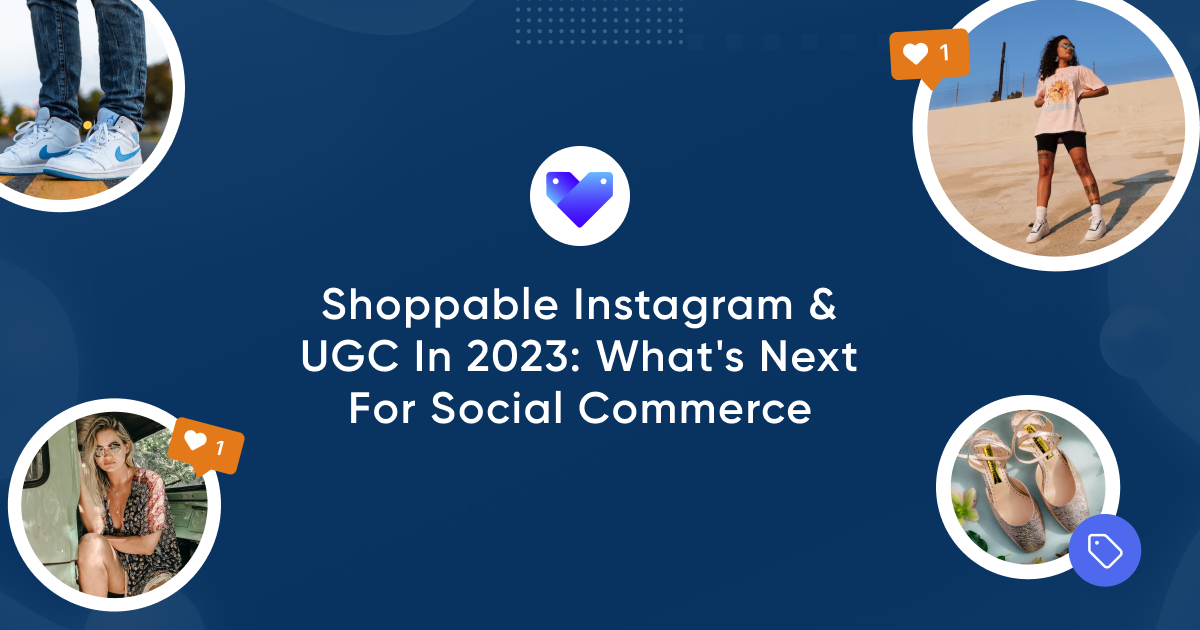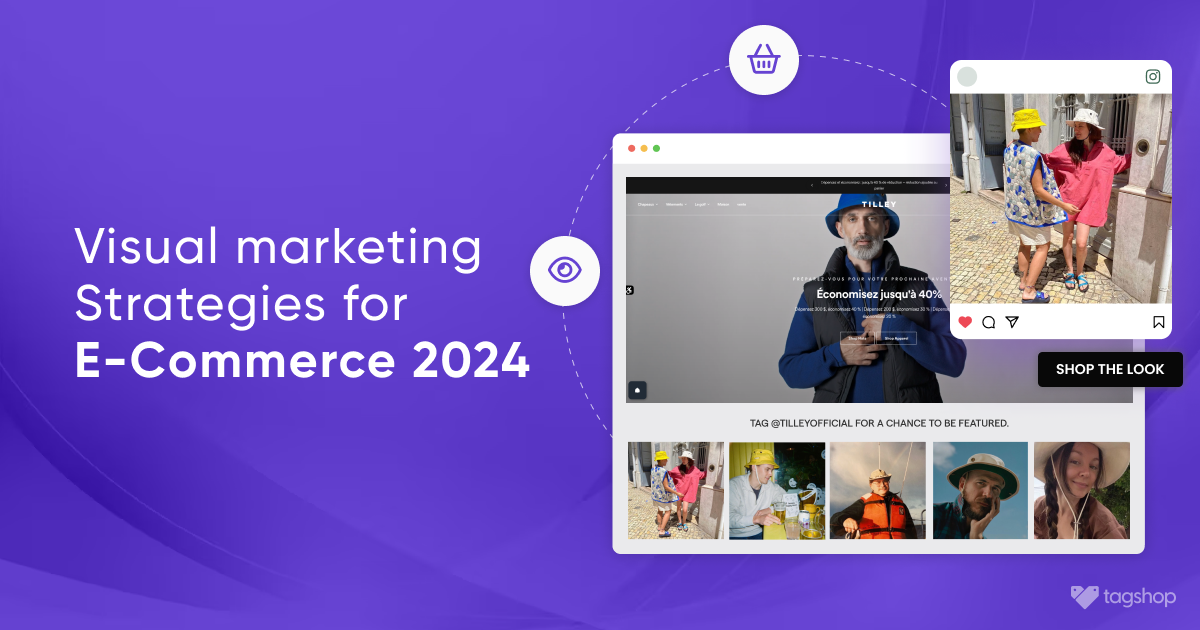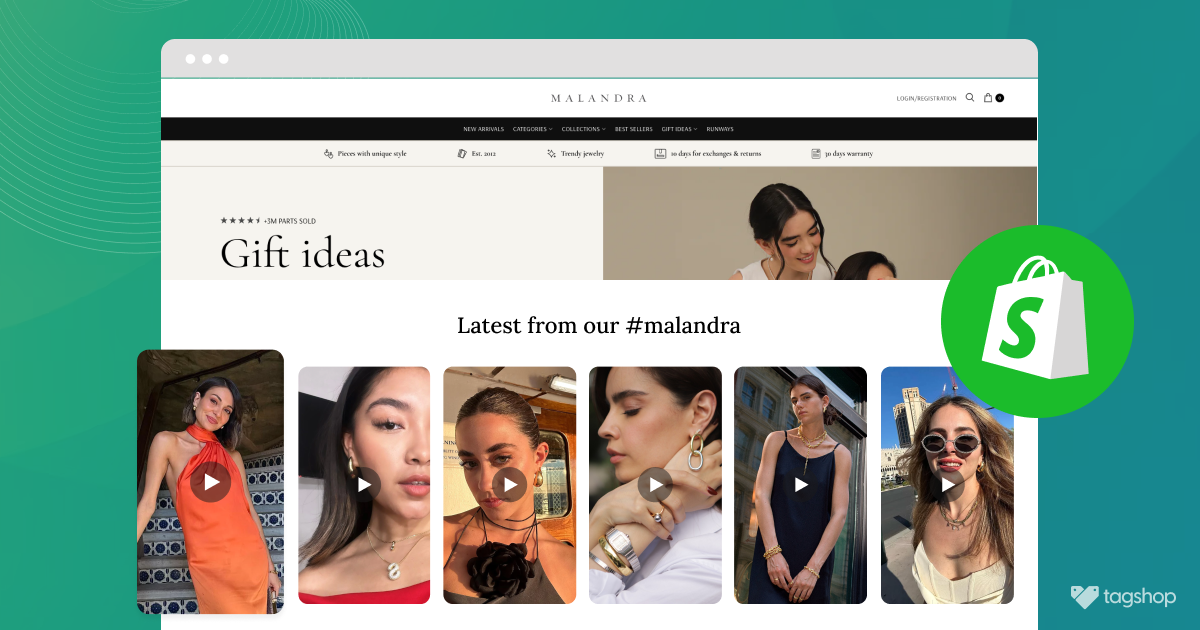Shoppable Instagram & UGC In 2025: What’s Next For Social Commerce
With the continued growth of e-commerce and the increasing dominance of social media in our daily lives, businesses are looking for new and innovative ways to connect with their customers and provide a seamless shopping experience. Shoppable Instagram & UGC are rapidly gaining traction as effective strategies for engaging audiences and driving sales.
The global market for Social Commerce estimated at US$559.7 Billion in the year 2020, is projected to reach a revised size of US$2.9 Trillion by 2026, growing at a CAGR of 30.8% over the analysis period.
In this blog, we’ll explore the latest trends and predictions for shoppable Instagram & UGC in social commerce, as well as the opportunities and challenges businesses are facing in this rapidly evolving space.
Shoppable Content – An Overview
Shoppable content is a type of content in social commerce that allows consumers to make a purchase directly from the content itself. This can include images, videos, social media posts, or any other type of digital content.
By incorporating links or embedded product information into the content, businesses can provide a seamless and convenient shopping experience for their customers.
Shoppable content enables consumers to easily browse and purchase products without having to leave the platform or website they are on.
According to a survey, 68% of global consumers have clicked on a shoppable social media post.
This strategy is becoming increasingly popular as businesses seek to leverage the growing influence of social media on consumer behavior and drive sales through personalized and interactive experiences.

Social Commerce Trends To Keep An Eye On
Social commerce has become an essential part of the digital marketing landscape, enabling businesses to reach out to customers in new ways and increase sales.
With the rise of social media, businesses are increasingly leveraging social commerce features to reach out to customers and drive sales.
Shoppable Instagram Reels
Shoppable Instagram Reels are a great feature for social commerce businesses to leverage to increase sales and engage with customers. For businesses looking to optimize their online strategies, enrolling in a digital marketing courses can provide insights into leveraging tools like Instagram effectively.
While regular videos have an average view rate of 1.74%, Instagram Reels record an average view rate of 2.54%.
With shoppable Instagram Reels, businesses can tag their products in their videos, making it easy for customers to purchase products directly from their feeds.
One of the key benefits of shoppable Instagram & UGC is that they enable businesses to showcase their products in an engaging and interactive way.
By tagging their products in their Reels, businesses can provide customers with a seamless shopping experience that enables them to purchase products directly from the video.

Augmented Reality (AR)
One of the most exciting new social commerce features is Augmented Reality (AR) technology.
AR has become popular on social media platforms, allowing businesses to create immersive and interactive customer shopping experiences.
With AR, businesses can enable customers to try on products virtually, visualize how products would look in their homes, or preview how a piece of furniture would fit in a space.
AR technology enables businesses to provide customers with a more engaging and personalized shopping experience, which can help to drive sales.
Shoppable Posts
Another new social commerce feature that businesses should leverage is shoppable posts.
Instagram and Facebook have introduced shoppable posts, which allow businesses to tag products in their posts, making it easy for customers to purchase products directly from their feeds.
According to a report by Hootsuite, Instagram is a leading platform for shoppable content, with over 130 million users tapping on shopping posts every month.
These posts can also be targeted to specific audiences, increasing the likelihood of conversion.
Shoppable posts in the form of, shoppable images and shoppable videos, are an effective way to increase sales, as they make it easy for customers to purchase products without leaving the platform.
Livestream Shopping
The US live stream shopping market is expected to grow from $11 billion to $25 billion by 2023.
Livestream shopping is another feature that enables businesses to conduct live video streams of their products, allowing customers to ask questions and make purchases in real time.
This feature is popular in China and has been gaining popularity in other countries as well.
Livestream shopping is an effective way to drive sales, as it enables businesses to showcase their products in an engaging and interactive way.
User-Generated Content
Consumers find UGC 9.8x more impactful than influencer content when making a purchasing decision.
User-generated content is the content created by brand users in the form of photos, videos, reviews, and ratings, to influence purchase decisions.
Eureka Street Furniture, a furniture brand from Australia, received 15% more conversions and a 78% higher user engagement rate using Tagghsop’s UGC galleries.
Social media platforms have integrated social proof into their shopping features, enabling businesses to leverage shoppable UGC to drive sales.
User-generated content is a powerful tool for businesses, as it enables them to build trust and credibility with their customers.
Messenger Chatbots
Messenger chatbots are another social commerce feature businesses should leverage to grow.
Messenger chatbots allow businesses to automate their customer service, provide product recommendations, and complete purchases through a chat interface.
Chatbots can also answer frequently asked questions and provide personalized recommendations based on a customer’s preferences and purchase history.
Messenger chatbots are an effective way to increase sales, providing customers with a personalized and interactive shopping experience.
YouTube Shoppable Videos
YouTube shoppable videos allow brands to turn their video content into a sales opportunity by integrating e-commerce functionality directly into their videos.
When viewers watch a shoppable video, they can see product details, prices, and links to purchase the products featured in the video.
Brands can upload their video content to YouTube and tag the products featured in the video with links to their product pages.
YouTube’s algorithm recognizes the product tags and adds clickable product links to the video.
Viewers can click on these shoppable links to learn more about the products and purchase them directly from the video.
Brands can also use YouTube’s “end screens” feature to display product recommendations and links to their website at the end of the video.
YouTube shoppable videos are great shopping video examples that brands can involve in their social commerce strategy to boost sales and conversions.
Personalized Advertising
Social media platforms enable businesses to create highly targeted advertising campaigns, reaching out to customers based on their interests, behaviors, and purchase history.
This feature allows businesses to create highly personalized advertising messages that are more likely to convert customers.
Personalized advertising is an effective way to increase sales, as it enables businesses to reach out to customers with relevant and engaging advertising messages.
Top Social Commerce Platforms
Platforms on which businesses and brands promote their products are crucial to their success.
Every platform offers something different and demands something different which is businesses need to put more effort into studying them.
TikTok
TikTok, a video-based platform, has a large user base, with over 1 billion active users worldwide.
Its users are highly engaged and spend an average of 52 minutes daily on the app. This gives businesses a captive audience that is more likely to engage with their content.
TikTok’s shoppable video content is highly engaging and can be used to showcase products and services interestingly and engagingly.
This makes it easier for businesses to showcase their products and services to potential customers.
TikTok offers a range of in-app features that make it easier for businesses to sell their products and services.
For Shoppable Tiktok, businesses can add links to their online stores in their profile, and they can use the “Shop Now” button in their videos to direct users to their products.
With over 2.8 billion active users, Facebook allows businesses to reach a large and diverse audience.
This allows businesses to target specific demographics, interests, and behaviors to connect with potential customers.
Facebook offers a range of advertising options to help businesses reach their target audience.
These include options such as retargeting, lookalike targeting, custom audiences, and Facebook Ads report which allow businesses to tailor their advertising to specific groups of people.
Facebook offers several e-commerce integrations, such as Facebook Shops and Marketplace, which allow businesses to showcase and sell their products directly on the platform.
These integrations provide a seamless shopping experience for customers and make it easier for businesses to generate sales.
With over 330 million monthly active users, Twitter offers businesses a unique opportunity to connect with potential customers, engage with their audience, and drive sales.
Twitter is a real-time platform, which means that businesses can engage with their audience in real time. This helps to build brand awareness and establish a strong online presence.
This platform offers businesses the ability to create highly targeted advertising campaigns. This allows businesses to reach specific demographics and interests to connect with potential customers.
As an added bonus, Twitter is a great platform for influencer marketing, which involves partnering with influential people on the platform to promote products and services.
Influencer marketing can be an effective way to reach new audiences and build brand awareness.
What does The Future Hold For Social Commerce?
Social commerce is a rapidly evolving field, and there are several trends that are likely to shape its future.
The continued growth of mobile commerce
Mobile commerce has already transformed the way people shop online, and this trend is likely to continue in the coming years.
Brands that prioritize mobile optimization for their social commerce efforts will be well-positioned to capture the growing number of consumers who prefer to shop on their mobile devices.
Increased use of augmented reality and virtual try-on tools
Augmented reality and virtual try-on tools are becoming increasingly popular in social commerce, as they allow consumers to see products in a realistic way before making a purchase.
Brands that incorporate these tools into their social commerce strategy can provide a more engaging and satisfying shopping experience for customers.
Greater use of social media influencers
Social media influencers are a powerful tool for social commerce, as they can help brands to reach new audiences and build trust with consumers.
In the coming years, we are likely to see more brands partnering with social media influencers to create shoppable content that drives sales.
Rise of social commerce platforms
While social media platforms such as Instagram and Facebook have already made significant strides in social commerce, there is likely to be the continued growth of social commerce-specific platforms.
These platforms will focus on providing a seamless and integrated shopping experience for consumers, making it easier for brands to drive sales.
Increased personalization
Personalization is key in social commerce, as it helps to build customer loyalty and drive sales.
In the coming years, we are likely to see more brands using customer data to personalize the shopping experience, such as by offering customized discounts and recommendations.

Wrapping Up!
In conclusion, shoppable content and shoppable UGC is playing an increasingly important role in social commerce, and this trend is likely to continue in 2025 and beyond.
As consumers spend more time on social media platforms, brands that can create engaging and interactive shoppable content, and leverage UGC effectively, will be well-positioned to capture a growing share of the social commerce market.






